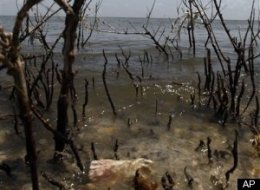It’s Jam Band Friday – http://www.youtube.com/watch?v=RupUECcyVow
What ever happend to a great innovative idea. In Early 2008 everyone was a twitter about this story. Why? Because half to one third of the energy we generate is wasted. Then:
http://abcnews.go.com/Technology/GadgetGuide/story?id=4173214&page=1
Scientists Claim Energy Breakthrough
Simple Device Converts Heat Directly to Electricity, Which May Mean No More Batteries

Scientists are developing a new device that could have a profound impact on global energy supplies by converting wasted heat into electricity. It could potentially have an impact on everything from power plants to cell phones, and it came about because of a serendipitous discovery that had eluded scientists for half a century.
Researchers at Lawrence Berkeley Laboratory and the University of California, Berkeley, have found a way to use ordinary silicon to convert heat to electricity. The technique could mean that some day you will be able to recharge your cell phone with electricity produced by your own body heat, and enormous amounts of energy that is now wasted could be recycled.
“We feel that this is a breakthrough,” said Arun Majumdar, a mechanical engineer and materials scientist with joint appointments at the Berkeley lab and UC Berkeley. “I’m very excited about this.”
Astonishingly, Majumdar and his colleagues didn’t set out to achieve what they have done.
“It was serendipitous,” he said. “We never planned for it.”
And perhaps even more surprising, they did it with a material that most scientists thought would never work for this purpose — ordinary silicon, a cheap, abundant material that is the foundation for the multibillion-dollar semiconductor industry.
Majumdar and his fellow researchers, including chemist Peidong Yang, a noted leader in the rapidly growing field of technology at the incredibly small “nano” scale, reported on their work in the Jan. 10 issue of the journal Nature. It’s not clear yet why the device they have created works.
“We don’t have all the answers at this point,” Majumdar said. But laboratory experiments show that it does, indeed, work. At least on a small scale. The device, placed between a hot plate and a cold plate, produced enough electricity to power a light bulb, although they didn’t do that demonstration. Instead, they measured the current flowing from the hot plate toward the cold plate, and it was sufficient to claim success, he said.
:}
http://www.youtube.com/watch?v=PenutnCkyx8&feature=related
or this:
http://www.youtube.com/watch?v=cAF-cEThNWU&feature=related
:}
NoW:
http://www.greentechmedia.com/articles/read/silicon-heat-cheap-energy-gets-1-million/
News | Energy Efficiency
Michael Kanellos: May 3, 2010
‘Silicon + Heat = Cheap Energy’ Gets $1 Million
Exotic waste heat startup Alphabet Energy gets more fun
 Alphabet Energy, which says it can make electricity for around $1 a watt out of waste heat in factories or data centers, has raised $1 million from Claremont Creek Ventures and the CalCef Clean Energy Fund.
Alphabet Energy, which says it can make electricity for around $1 a watt out of waste heat in factories or data centers, has raised $1 million from Claremont Creek Ventures and the CalCef Clean Energy Fund.
Waste heat — which is one of our favorites sources of energy here — essentially revolves around capturing heat from engines and machinery and using it to run things like water heaters or converting it into electricity. The U.S. consumes around 100 quads (100 quadrillion BTUs) of energy a year, and 55 to 60 quads get dissipated as waste heat, according to Arun Majumdar, the UC Berkeley professor who came up with a lot of the technology behind Alphabet (he now runs ARPA-E, the advanced projects group inside the Department of Energy). Thus, there is a lot of waste heat out there and it could be cheaper than solar. Alphabet estimates it could be a $200 billion market.
Heat-to-electricity can be accomplished in two ways. Companies such as Recycled Energy Development (RED) and Ormat have successfully retrofitted factories to capture waste heat, but these systems largely rely on mechanical engineering. Heat is captured and then channeled into productive uses. One of RED’s showcase projects — coming next year — is a system at West Virginia Alloys, a silicon manufacturer, that will generate 45 megawatts of electrical power from the waste heat generated by factory operations. The company uses 120 megawatts at the current time, but the waste heat system will effectively allow Alloys to recover about one-third of the power it now buys but wastes. Fuel cells can also be used to harvest waste heat.
Semiconductors could potentially be the next wave for the industry, and this is where Alphabet comes in. Traditional waste heat chips — heat goes in one side, electricity comes out the other — cost around $20 a watt and are made out of bismuth telluride. Alphabet won’t say what its semiconductor is made from, but sources say the chief material is silicon nanowires.
:}
More next week.
http://www.youtube.com/watch?v=2nTcDU73gLs&feature=related
:}













